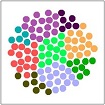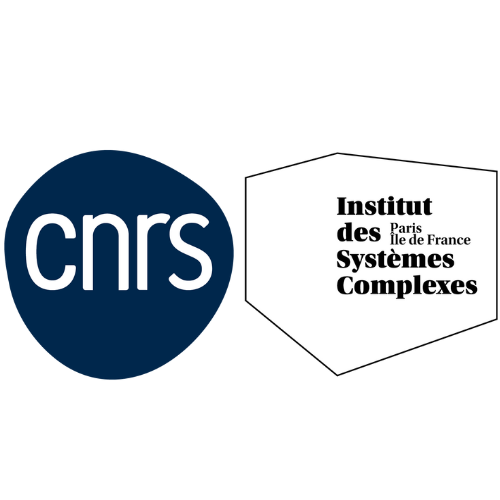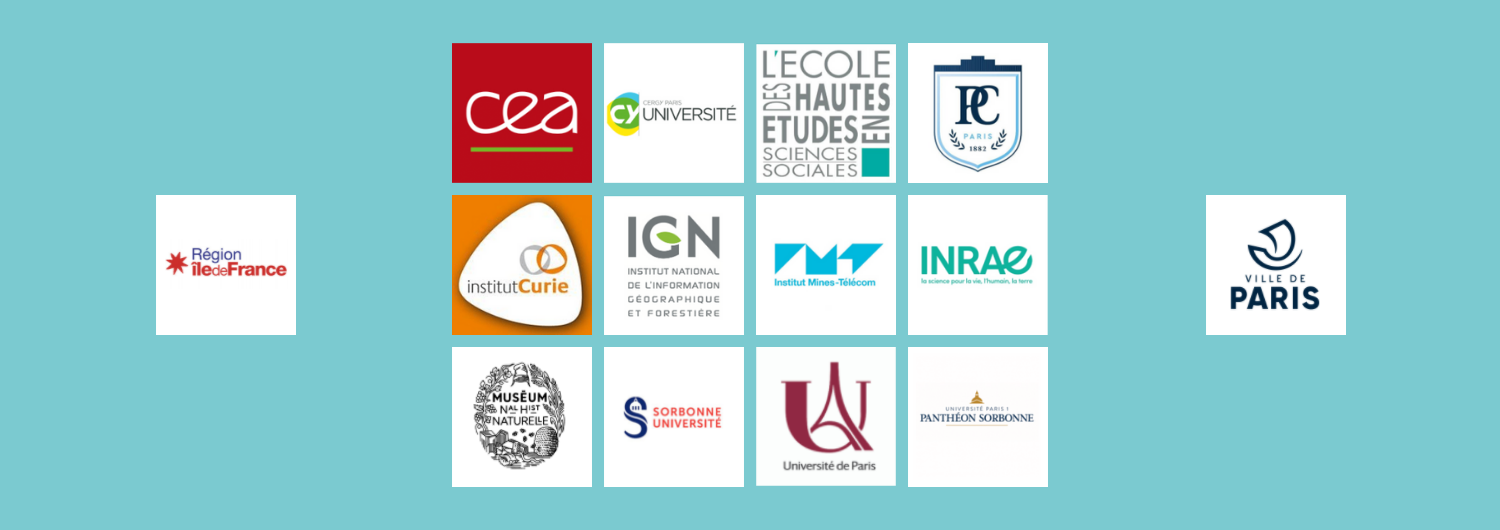EMBENG – Embryomorphic Engineering (2D)
By René Doursat
Abstract modeling and simulation of the fundamental principles of self-patterning and self-assembly duringembryonicdevelopment, for exportation to artificial systems.
A precursor instance of morphogenetic engineering, embryomorphic engineering proposes an artificial reconstruction of biological morphogenesis. Inspired by “evo-devo” (see e.g. Kirschner & Gerhart 2005), it focuses on the causal and programmable link from genotype to phenotype at these two levels simultaneously, something needed in many emerging computational domains.
An embryomorphic model combines three key principles of multicellular biological development: chemical gradient diffusion (providing positional information to the agents), gene regulation (triggering their differentiation into types, thus patterning), and cell division (creating structural constraints, hence reshaping). Therefore, agents are guided by the genetic instructions they carry, which parametrize and modulate the fundamental laws of mechanical-like assembly and biochemical-like signaling that they obey.
Biological development is schematized by a multiscale and modular distributed process, which typically relies on an expanding lattice of cells (Fig. c and videos). Each cell contains a gene regulatory network (GRN), modeled as a feed-forward hierarchy of switches that can settle in various on/off expression states (Fig. a-b).
- Pattern formation dynamics: Local morphogen gradients (X, Y) provide positional information in input, which is integrated by each GRN to produce differential expression of identity genes (I, J, …) in output. Similarly to striping in the Drosophila embryo, the lattice becomes segmented into spatial domains of homogeneous genetic expression (one for each identity gene; Carroll et al. 2001) that resemble stained glass motifs (Fig. d).
- Self-assembly dynamics: Meanwhile, it also expands by cell proliferation, creating new local gradients of positional information within former single-identity domains (Fig. d, right). Analogous to a growing canvas that paints itself (Coen 2000), the alternation of growth and patterning results in the creation of a form.
The spontaneous making of an entire organism from a single cell is the epitome of a self-organizing and programmable complex system. Through a precise spatiotemporal interplay of genetic switches and chemical gradients, an elaborate form is created without explicit architectural plan or engineering. Embryomorphic engineering, a methodology I created, proposes a multi-agent abstraction of these fundamental morphogenetic mechanisms toward artificial systems.
 |
|
    |
Abstracting from biological development, an important goal of EMBENG is to contribute to a novel systems engineering paradigm replacing omniscient architects with large-scale decentralized collectivities of agents. When functionality is distributed over a great number of components, it is impossible to assemble and instruct each of them individually. Rather, in a way similar to biological cells, these components should be easily mass-produced, initially as identical copies of each other, then acquire specialized positions and functions by themselves within the growing system. Various instances of theses principles have now been realized in a virtual 3D world (see MAPDEVO below) and in nD network topologies (see PROGNET below).
References
- Carroll et al. (2001) From DNA to Diversity. Blackwell Sci.
- Coen (2000) The Art of Genes. Oxford Univ. Press.
- Kirschner & Gerhart (2005) The Plausibility of Life. Yale University Press.
Selected publications
Doursat, R. (2008) Chapter 8: Organically grown architectures: Creating decentralized, autonomous systems by embryomorphic engineering. In Organic Computing, R. P. Würtz, ed.: pp. 167-200. Springer-Verlag, ISBN 978-3-540-77656-7. CHAPTER![]()
Doursat, R. (2009) Facilitating evolutionary innovation by developmental modularity and variability. “Generative & Developmental Systems” Track (GDS 2009), in Proceedings of the 11th International Genetic and Evolutionary Computation Conference (GECCO 2009), July 8-12, 2009, Montreal, Canada: pp. 683-690. ACM, ISBN 978-1-60558-325-9. PAPER



